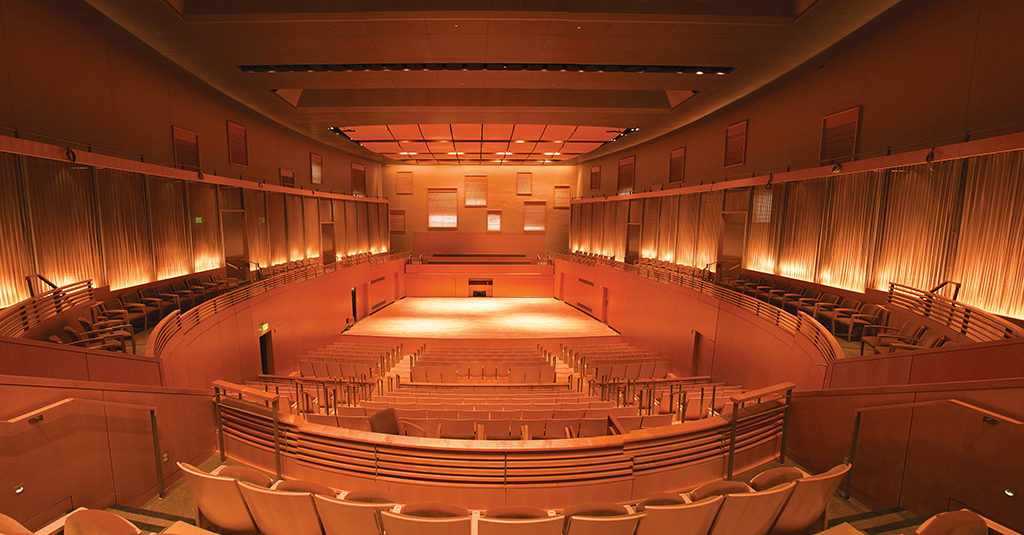Asgerdur Sigurdardottir greets her competition with an impressive spread: an array of cheeses, gourmet crackers, hummus, caprese salad kabobs and a sheet of nametags. Any moment now, the other women will arrive. Nervous energy practically crackles off her.
Tonight’s guest list includes Catherine Cochran of the Shriver Hall Concert Series, Irina Kaplan Lande of the Candlelight Concert Society, Eva Mengelkoch and Laura Provan of Pro Musica Rara, Asiya Korepanova of Festival Baltimore and Linda Dusman of the University of Maryland Baltimore County (UMBC) Department of Music. Sigurdardottir was pleasantly surprised to find that when she sent the email invitation out in late May, all of the women responded with a resounding “yes.”
Sigurdardottir, president and CEO of the Baltimore Classical Guitar Society (BCGS), called this meeting of musical minds at her Lutherville home with the sole goal of getting these friendly, but only casually acquainted, rivals to collaborate to publicize the “hidden gem” of Baltimore’s music venues: the Earl and Darielle Linehan Concert Hall at UMBC.
“This is pretty unique. I’m not aware of any other meeting like this,” Sigurdardottir says. “Different concert presenters are getting together, and technically, we are often fighting for the same public.”
These musicians will perform at Linehan Hall this year because their usual host, the Joseph and Rebecca Meyerhoff Auditorium at the Baltimore Museum of Art, is closed for renovations until winter 2018. But Sigurdardottir thinks they all agree: Linehan Hall is anything but a second choice.
“We just fell in love with the sound,” she says. “It is the perfect place for classical guitar.”
With 375 seats, Linehan is sizable, but still small enough to feel intimate. The location is ideal since it’s 10 minutes from BWI, easily accessible from Washington D.C. and surrounded by free and ample parking lots. And most importantly, thanks to careful construction by the same team that created the Strathmore in Bethesda, its acoustics are stunning. In fact, Sigurdardottir hopes that the move to Linehan might be permanent.
The problem? It opened just three years ago and maintains an underrated status. Sigurdardottir says that, even as immersed as she is in Baltimore’s classical music scene, she didn’t know about it until a year after it opened. That obscurity may lead to a loss of patrons during the transition.
“People are very set in their ways,” she says. “They want to go to the same concert halls, sit in the same seats.”
That’s why Sigurdardottir reached out to the others who are on their way to her house tonight, an event initially proposed by her husband, BCGS artistic advisor and renowned classical guitarist Manuel Barrueco.
“He said, ‘We have to figure something out,’” Sigurdardottir says. “‘There are other people in the same boat, who want to go there to present concerts, and we’re all sort of apprehensive about whether the public is going to follow.’”
At 7 p.m. on the dot, the doorbell rings (timing is important in classical music), and Sigurdardottir jumps up. Despite their shared line of work, she knows only Cochran and Kaplan Lande; she’s met maybe one or two others in passing. That’s why nametags are passed around as the last of the guests arrived. Wine is poured, a group photograph snapped and conversation made. It doesn’t take long for musicians to bond over mutual colleagues and friends, and of course, the merits of Linehan Hall.
“It feels like a small hall within a big hall,” gushes Cochran, which earns a few nods.
But as the group moves the conversation to a long mahogany dining table, one fact becomes strikingly apparent: All of these directors sipping wine and pulling notepads and pens from their purses are women. Prior to the meeting, Sigurdardottir admitted she “got a kick out of that,” and when the subject is raised again at the table, the women chuckle and Korepanova raises both fists: “Girl power!”
And just like that, any reserve is gone. The musicians throw out a problem or question, followed by a brief back and forth and concluded with a tentative solution. The conversation has the rhythm and flow, unsurprisingly, of a classical music composition. They mention the importance of recommending restaurants nearby for dinner before or after a show, and Korepanova names her favorite places on Frederick Road. Sigurdardottir suggests UMBC update their website with a list that includes those places and Dusman agrees. Onto the next.
They also suggest methods of publicity, like digital billboards, email blasts, radio segments and alumni magazines. They agree to swap promotional materials, advertising each other’s shows in their own performance programs. Occasionally, they get a little off track, comparing their societies’ ticket prices (and how they vary for students and seniors), and discuss the merits of early show times (you can get dinner afterwards and it doesn’t interfere with prime sporting events, “which I hear is important,” Provan jokes).
When the 90-minute discussion wraps, the goodbyes are much warmer than the hellos, even as they find themselves working together to tackle one more problem: getting out of the driveway, where they’d parked each other in.
Afterwards, Sigurdardottir says, “I thought it went really well. I was very happy. It got going answers for all of the questions I had, and I even found out questions that I should have had but didn’t have yet.”
In the weeks that follow, Sigurdardottir and Dusman tackle the to-do list, update calendars and put together detailed directions to Linehan Hall, among other things, to continue their collaboration.
“I am certain that whenever the opportunity arises, we will continue to collaborate now that we have all met,” Sigurdardottir says. “I will make sure to invite them over for a chat a couple of times a year to share ideas, successes and challenges, in the hope that we can learn from one another.”





